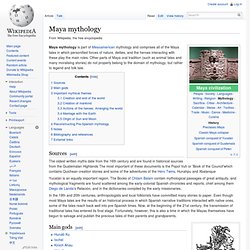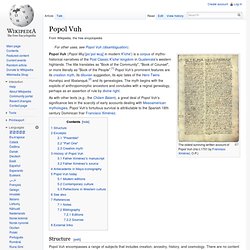

The Mayan Calendar - Mayan Majix - Ian Xel Lungold - Mayan Astro. The Mayan Calendar - The World Will Not End. Steep Uphill Climb to 2012: Messages from the Mayan Milieu ©- Copyright 2002 by Steven McFadden In early Autumn 2002, Carlos Barrios journeyed North from his home in Guatemala to the Eastern edge of the Four Corners. In Santa Fe, NM, at the tail of the Rocky Mountain spine, Mr.
Barrios spoke in a knowledgeable manner about the Mayan tradition and the fabled Mayan calendars. The Mayan calendars are an object of intense interest for many thousands of people right now, because they focus upon the watershed date of Dec. 21, 2012. Everything changes by then, it is said. With a cultural heritage including thousands of pyramids and temples, and a calendar that has proven itself to be astronomically accurate over millions of years, the Maya tradition is widely considered to be a mystic key to the soul of Turtle Island (North America).
Mayan Cholq'ij - an image of the Mayan Tzolkin calendar used on the Altiplano. The Mayan Calendar Portal. The Book of Mayan Astronomy. Maya mythology. Maya mythology is part of Mesoamerican mythology and comprises all of the Maya tales in which personified forces of nature, deities, and the heroes interacting with these play the main roles.

Other parts of Maya oral tradition (such as animal tales and many moralising stories) do not properly belong to the domain of mythology, but rather to legend and folk tale. Sources[edit] The oldest written myths date from the 16th century and are found in historical sources from the Guatemalan Highlands The most important of these documents is the Popol Vuh or 'Book of the Council'which contains Quichean creation stories and some of the adventures of the Hero Twins, Hunahpu and Xbalanque Yucatán is an equally important region.
In the 19th and 20th centuries, anthropologists and local folklorists have committed many stories to paper. Main gods[edit] Important mythical themes[edit] Creation and end of the world[edit] Creation of mankind[edit] Actions of the heroes: Arranging the world[edit] Notes[edit] Popol Vuh. The oldest surviving written account of Popol Vuh (ms c.1701 by Francisco Ximénez, O.P.)

Popol Vuh (Popol Wuj [poˈpol wuχ] in modern K'iche') is a corpus of mytho-historical narratives of the Post Classic K'iche' kingdom in Guatemala's western highlands. The title translates as "Book of the Community", "Book of Counsel", or more literally as "Book of the People".[1] Popol Vuh's prominent features are its creation myth, its diluvian suggestion, its epic tales of the Hero Twins Hunahpú and Xbalanqué,[2] and its genealogies. The myth begins with the exploits of anthropomorphic ancestors and concludes with a regnal genealogy, perhaps as an assertion of rule by divine right. As with other texts (e.g., the Chilam Balam), a great deal of Popol Vuh's significance lies in the scarcity of early accounts dealing with Mesoamerican mythologies.
Popol Vuh's fortuitous survival is attributable to the Spanish 18th century Dominican friar Francisco Ximénez. Structure[edit] Preamble Part 1 Part 2 Part 3 Part 4.